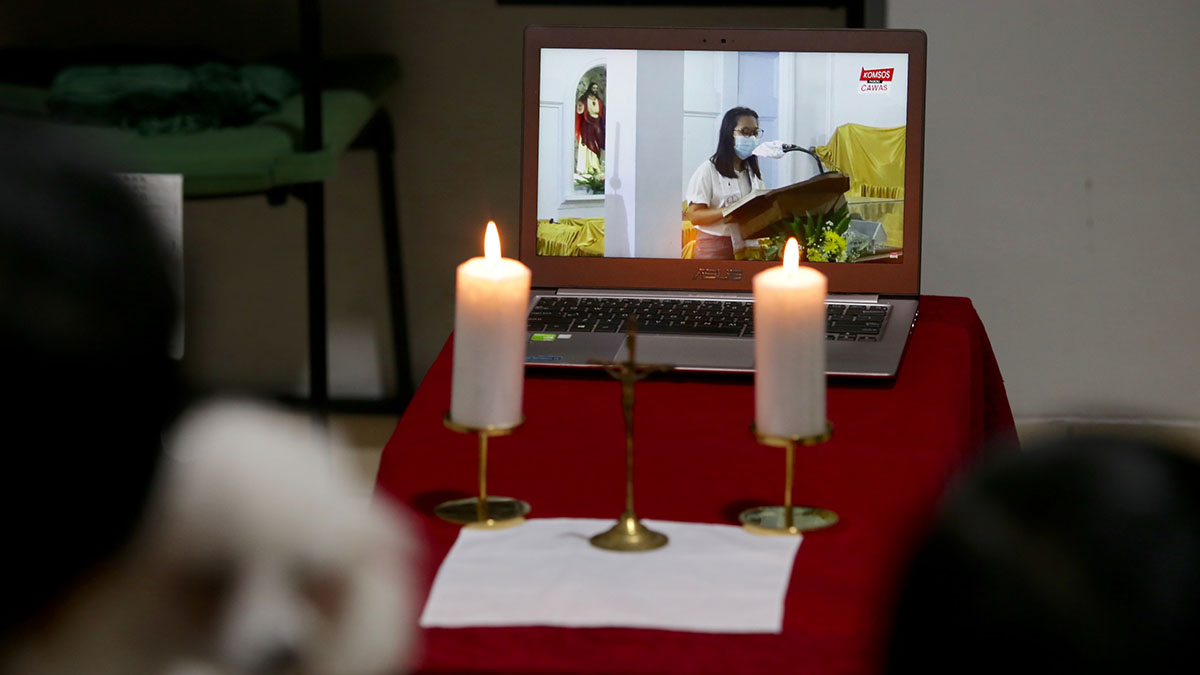The pandemic has changed ways that some Jews and Christians practice their faith, says a Carolina religious studies expert.

For some worshippers, a starry night sky has replaced the ceiling of a synagogue or church building.
Congregating outside is just one way that the pandemic has forced many Jews and Christians to alter how they commune and practice their religion. Some changes will remain, says Evyatar Marienberg, associate professor in the religious studies department in the College of Arts & Sciences and director of the minor program in Christianity and culture. His research interests include contemporary Catholicism, the social history of Jews and Christianity in Medieval Europe and rabbinics.

You’ve thought about how world events affect religious practices. What is different or the same about the pandemic’s effects?
When 9/11 happened, for instance, people talked about going more often to churches. I remember telling myself, This will pass. People need some comfort that religions can sometimes provide, but it is temporary. It will pass and nothing will change significantly with regard to religious practices. I believe that was the reality. The pandemic is different because it’s so long. Two years have gone by.
Take, for example, the issue of actively being in a place of worship. Before COVID-19, it was unthinkable for many people and religious groups to have their services in any way other than going to and being in their place of worship. That’s not the case anymore. Suddenly, things that were obvious became not obvious at all.
The impact is not the same for all. For some groups, this didn’t pose big theological, doctrinal or legal problems. Their service’s center was words, sermons, homilies or watching someone doing something. To do it online was not a tectonic shift.
For others, it was big. For Catholics, for whom the central part of worship is physical — the Eucharist, taking consecrated bread, drinking consecrated wine — this situation created a problem. Not going to service without a good reason is a sin, but not a severe one. But the clergy told them not to go. They had to make it work by proceeding online or by drive-in or being distanced. They created new prayers, new rituals and continued with this for an extended period. Even though now people do go back, it’s clear to all that nontraditional ways of attending services have been legitimized.
Were some practices, such as using one cup for communion, problematic?
Yes. The most extreme example I know of happened in Greece, in the Orthodox Church. There was at the pandemic’s beginning serious denial of COVID-19 and its risks. One Greek bishop who insisted on people using the same spoon for taking bread and wine died from COVID.
What examples of major challenges or changes have you seen?
Several things have happened in some Jewish groups — especially, but not only, Orthodox ones. For Orthodox Jews, the use of electricity and computers is forbidden on the Sabbath unless it’s pre-programmed in some way, for example, with a timer for lights or left permanently on like hot plates for food or heating. They couldn’t say, “Let’s Zoom our Shabbat services,” when using a computer is forbidden during that day. Some Jewish groups that don’t forbid electricity on the Sabbath tried for years to limit use of electric and electronics in rituals. Suddenly they had to do something different. I know of a Conservative-leaning synagogue in New York that would have never used screens and electronics, but they were forced to and now they continue to do it. People like it. It enables people from around the world to join their services.
In Israel and in many Orthodox communities worldwide during the time synagogues were closed, people created local services outside of their homes. For a Jewish traditional public prayer, 10 Jewish men or, for more liberal groups, 10 Jewish people, are needed, so a few families on the same block created their own outdoor service. When weather was nice, people enjoyed it. Instead of walking to synagogue, you have your service outside your home. I grew up about a 15-minute walk from synagogue. Instead of going every Friday evening to the synagogue and back 15 minutes each direction, now your service is a minute or less from home.
And outdoors can even give new spiritual meanings for some. It was refreshing. You are under the sky; you see stars; you see the world. And what happened in many places is that even when synagogues opened again, some people did not return. They got used to something that they found to be nice. I know of a place where the rabbi and community leaders begged people to come back to the building. I’m sure variations of this happened in other religions — outdoor services, smaller services, doing things in more intimate groups.
What about finances and operations?
Finances of religious organizations have been affected. This can happen in different ways based on how they get financial support from their members. Some have seen drastic drops in donations.
In places where much of the money comes from weekly donations when people attend services, which is common in churches, they’ve had to think about how to reach those attending online. By making their services password-protected only to active members? By having a “donate” button? Other groups based their income on a yearly membership. It’s common in synagogues, where membership dues are often collected before the high holidays through selling seats for the services. What happens if a lower number of people than in the past physically attend these services? These issues present challenges.
Has the pandemic altered people’s relationship with God or how they practice rituals of their faith?
I am pretty sure that in places that were or are seriously hit, more people have faith questions. If members of your family die, it can have spiritual impact. When disaster happens, some people lose their faith, some people have their faith strengthened and for some people nothing happens.
Burial and treatment of the dead changed. Many religious groups were not able to perform purification rituals of bodies or bury the dead with particular rituals in the presence of community members and family. In some places, high numbers of clergy members died because they went near the sick and dying. Mourning rituals, for example the Jewish Shiv’ah, when people come to console mourners for seven days, were affected. Some groups had to accept cremation because of urgency and sanitary issues, even if this was something they opposed in the past. Will they accept it from now on? It’s hard to say.
By Scott Jared, The Well
